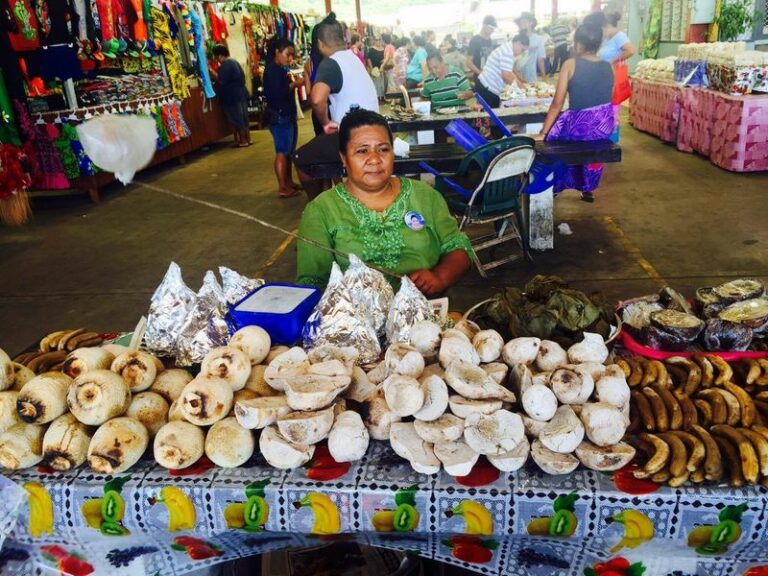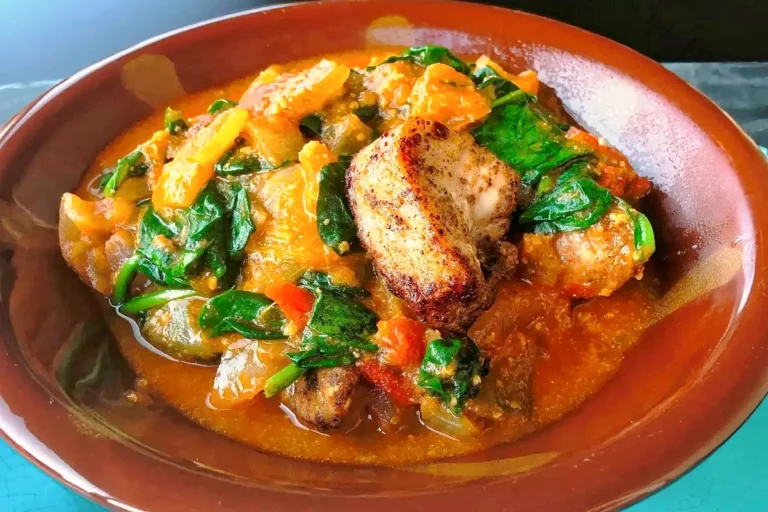Introduction: Exploring Samoa’s Food Scene
Samoa is a beautiful island country located in the South Pacific and is known for its pristine beaches, lush rainforests, and vibrant culture. However, one aspect of Samoan culture that is often overlooked is its rich culinary heritage. Samoa boasts a unique blend of traditional and modern cuisine, and the food market scene and festivals are a testament to this.
Traditional Samoan Cuisine: What to Expect
Traditional Samoan cuisine is based on local ingredients such as coconut, taro, breadfruit, and seafood. Some popular dishes include Palusami (taro leaves cooked in coconut cream), Oka (raw fish marinated in lemon juice and coconut cream), and Fa’alifu Fa’i (corned beef cooked in coconut cream). Samoan cuisine is not only known for its delicious taste but also for the cultural significance attached to it. Food plays a central role in Samoan customs, and it is often used to show respect and hospitality to guests.
The Samoan Market Scene: A Snapshot
The Samoan market scene is a bustling and vibrant hub of activity. Local markets can be found in almost every village, and they offer an array of fresh produce, seafood, meat, and handicrafts. One of the most famous markets is the Apia Market, which is located in the capital city of Samoa and is open every day except Sunday. Here, visitors can find a vast selection of local produce, street food, and handicrafts.
Festivals and Fairs: Celebrating Food in Samoa
Samoans love to celebrate their culture and heritage, and food plays a significant role in these celebrations. The Teuila Festival, held annually in September, is a week-long event that showcases Samoan culture, including traditional cuisine. The Festival of Food, Music, and Dance is another popular event that takes place in July and features traditional Samoan dishes, music, and dance performances.
Tasting Your Way Through Samoa: Recommended Food Tours
Food tours are a great way to experience Samoan cuisine and get a deeper understanding of the culture. One of the most popular food tours is the Samoa Cultural Village Food Tour, which takes visitors on a journey through the island’s villages to sample traditional dishes. Another option is the Apia Walking Food Tour, which takes visitors through the streets of Apia to sample a variety of street food and local specialties.
Conclusion: Savoring Samoa’s Rich Culinary Heritage
In conclusion, Samoa’s food market scene and festivals offer visitors a unique opportunity to experience traditional Samoan cuisine and its cultural significance. From fresh produce to street food, there is something for everyone. Whether you are exploring the markets or taking a food tour, make sure to savor Samoa’s rich culinary heritage.


